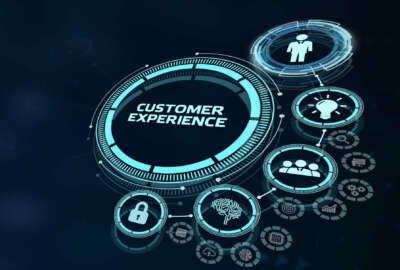Insight by Workday and AWS
Cloud, AI and software-as-a-service form path to modernized HR
Human resources applications, which touch everyone in the agency, provide a great use case for getting good with cloud, AI and software-as-a-service.
Agency after agency is pursuing modernization of human resources applications. And with good reason. HR touches everyone. Updating the processes for everything from changes of permanent station to checking vacation days left can help forge a more satisfied workforce. It can help the government compete for talent. Modernization can also help agency managers evaluate the workforce, plan for future needs, and create more effective job descriptions for skills-based recruitment.
Fundamental to modernizing HR applications is distilling out data from legacy applications and creating a new, integrated data source powering a range of applications.
Agencies “have dozens or sometimes hundreds of legacy systems that all have data captured in very different ways that perform bespoke roles,” said Matthew Cornelius, the managing director for federal industry at Workday. Therefore, he said, modernization “all starts with the data. The systems go away, once the data moves to a place that where it can be leveraged and used more effectively.”
The systems that went away, he said, are typically replaced with cloud-hosted, commercial platforms. Cloud services can help ensure security and integrity of data in such a way as to enable the agency staff to concentrate on application functionality, said Shannon Judd, the global director of federal partner sales at Amazon Web Services.
“Not even the most privileged admins within AWS can access a customer’s workloads or data,” she said.
Judd said data thus secured becomes available to one of the big trends in HR modernization: “How do you take artificial intelligence capabilities for process and workflow modernization.” Generative AI applications built in a secure cloud, she added, will automatically have security and privacy built in.
CX in the HR context
Ultimately, the point of software-as-a-service from sources such as Workday, and of the secure infrastructure from cloud providers such as AWS, is deploying effective applications with which prospects, employees and managers interact.
“When I think about customer experience at agencies,” Cornelius said, “one of the keys that comes out to me is, it’s all about the recruitment and the retention and the hiring of new employees.” He pointed to one statistic indicating the government has hired something like a million people since 2019.
“One of the things that agencies need to do is understand the skills out there that they’re looking for,” Cornelius said. “And then they need to be able to hire the right people in a skills-based hiring search.”
He said the Workday platform lets hiring managers employ generative AI to create job descriptions “that more effectively reach the kinds of candidates that they want and test those messages to see if they’re attracting the right level of talent.”
Cornelius added, “We allow them to use AI to evaluate skills-based hiring.” He said a growing number of agencies have become comfortable with the idea of generating job descriptions using AI for a wide range of occupations ranging from law enforcement to financial management.
Use of AI provides benefits upstream as well. For example, it can streamline the process of coding applications in the first place, Judd said. “Think about it as building and amplifying more powerful new applications. That’s going to help agencies really boost productivity at the enterprise.”
She added, “It’s streamlining coding and simplifying business intelligence; it’s improving clinical efficiency or efficiencies in the back office. And it’s doing it with security and privacy built in.”
Judd and Cornelius stressed the importance of data integration to get the most out of generative AI. But organizations must choose the correct data for each specific use case, consistent with careful handling for privacy and security requirements.“
Because HR applications work so widely across an agency, modernizing them in this manner elevates the skills of the IT staff generally in using safe and secure AI. What Judd called purpose-built infrastructure “can be scaled across multiple use cases.”
Cornelius said that acquiring the cloud and software-as-a-service licenses now will, over time, produce savings.
“Part of the value is in how it’s going to enable the workforce to be more productive, be more efficient and leverage data more effectively to drive mission outcomes,” Cornelius said. SaaS and cloud “are going to give you the ability, in the next year or two or three, to get rid of 10 or 50 systems or 100 applications that you no longer need.”
Copyright © 2025 Federal News Network. All rights reserved. This website is not intended for users located within the European Economic Area.
Tom Temin is host of the Federal Drive and has been providing insight on federal technology and management issues for more than 30 years.
Follow @tteminWFED






